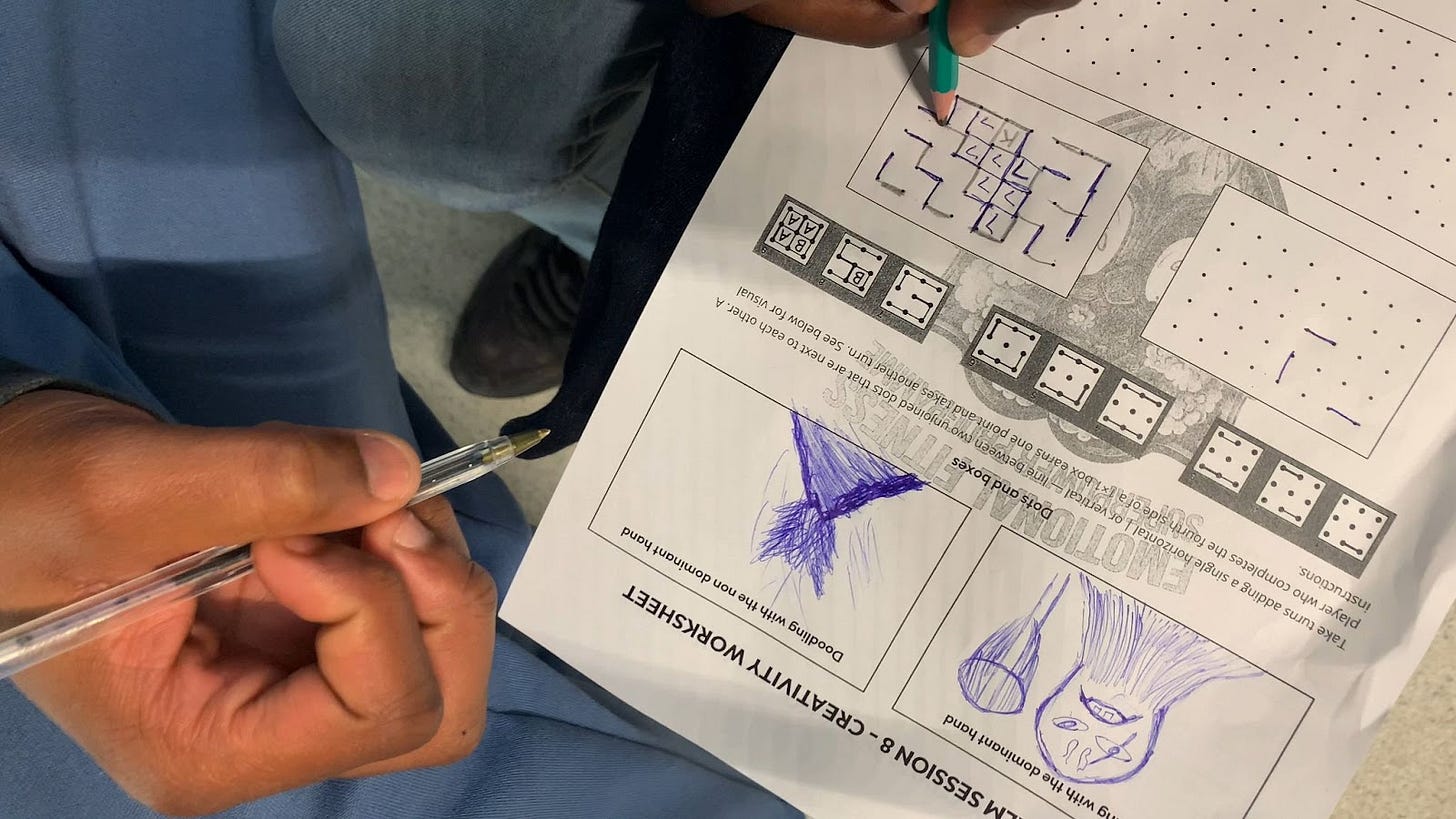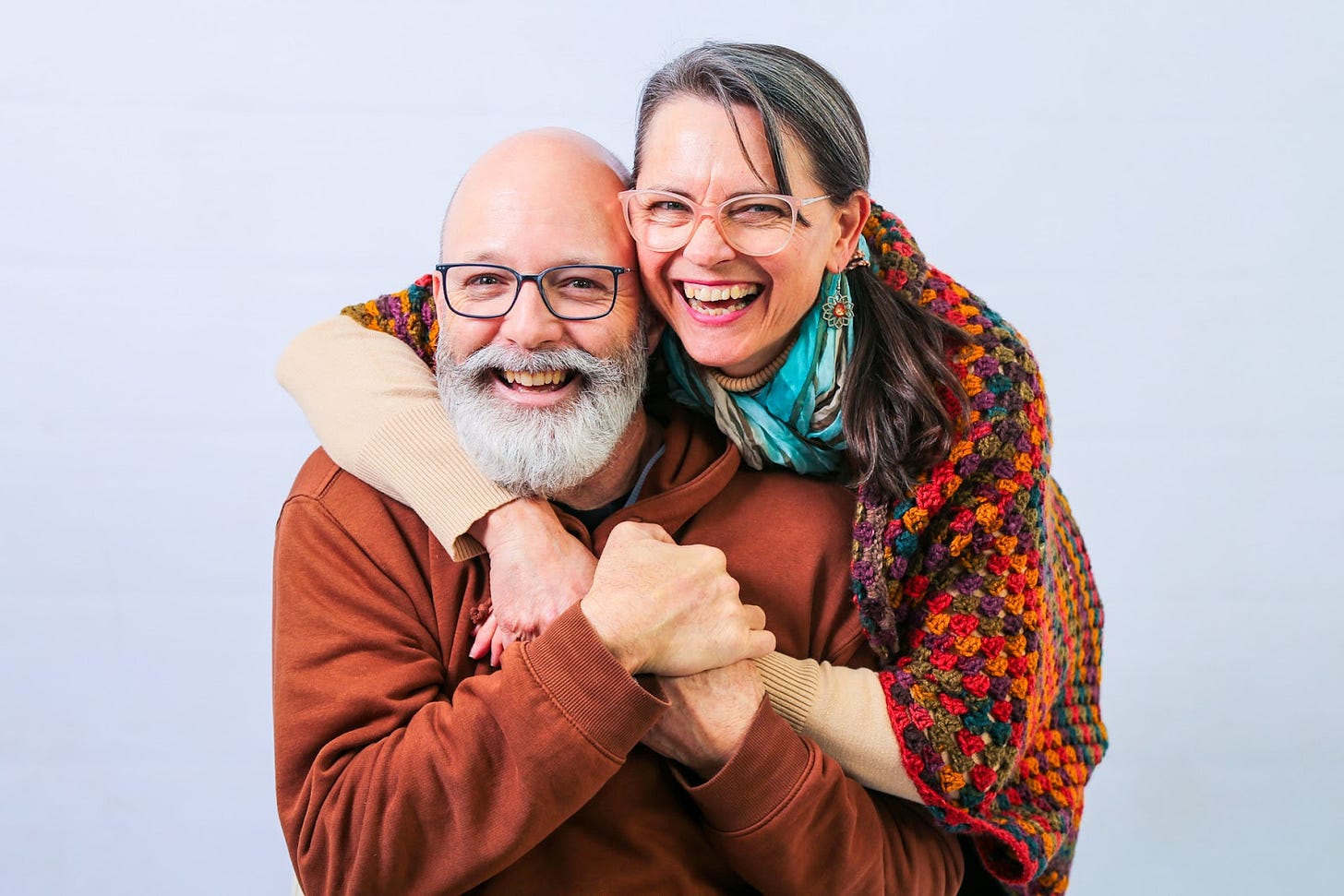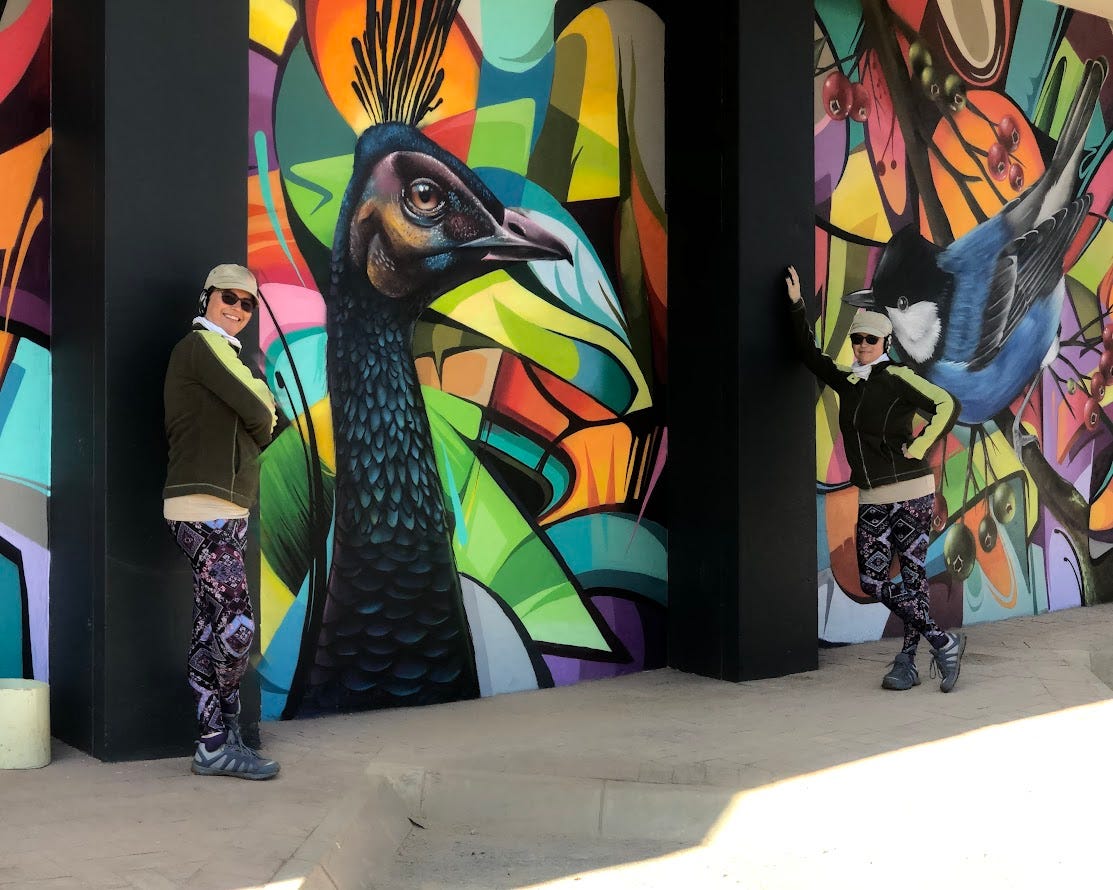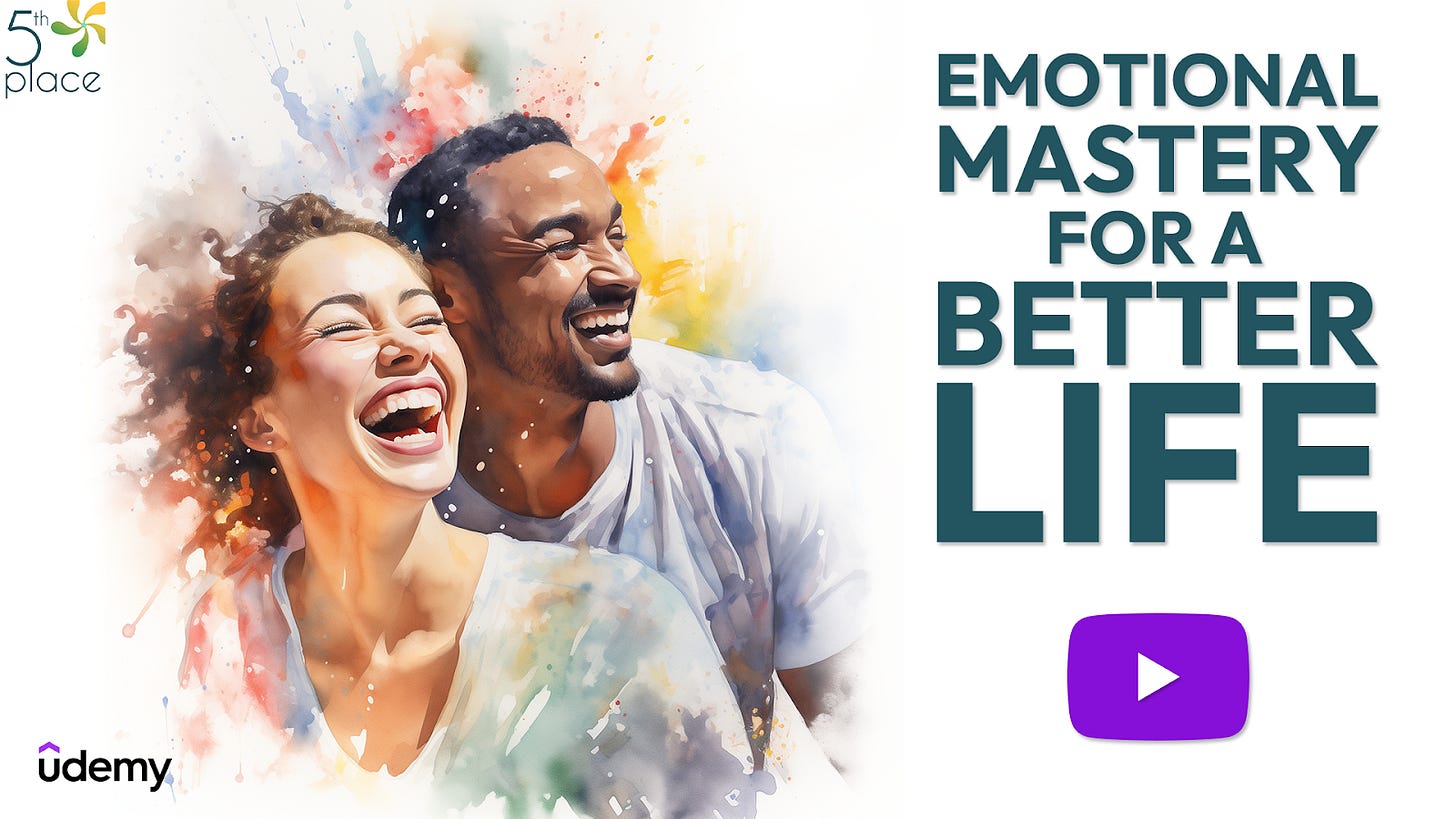Dots and boxes
A short and contracted week where being creative and surrendering to what is played a major role once again. Having fun and playing games brought smiles and laughter to a group of teens.
Enabling The How #173. Reading time: 7 minutes 6 seconds
It was a shorter, more contracted week with a public holiday on Monday. The days that followed were filled with a multigenerational tea party, granny duties and a space for another workshop that sat blissfully unattended. In between we had to plan for another Superpower Programme session. It was full and successful.
Four generations gathered together for tea and Leah. Great Grandmother Gransha, Granny Channy, Mum Cailyn and Baby Leah. Great Grandfather Nevy popped his head in too, not wanting to miss out on seeing his great granddaughter again.
Leah was compliant for a moment. She was fatigued from a disturbed and shortened nap and all that smiling she had to do for the Great Grandparents. Too soon she decided enough was enough - loudly!
Some swift and creative soothing, and Leah was asleep, on her Mum in the baby pouch.
“You have to do what you have to do to get her to calm down and sleep,” said Cailyn, flushed but relieved that Leah had quietened.
Babies don’t follow tea party timing.
Surrender to what happens
We had set aside Friday morning for another AMA-zing workshop. We do these in conjunction with Mark, who’s clients and interesting network are often the major source of our attendees. Maybe it was the already shortened week, maybe the fact that it was a Friday or maybe just not the right time as, by the Tuesday before, we had not one interested participant.
We were not deterred, however, participants had been known to show up on the day. If no-one did we would continue to work on something together, just the three of us.
“My lesson, these days, is to surrender and let what needs to happen, happen, without forcing anything,” said Mark.
We concurred and let go of any concerns we may have had about the morning. Secretly we all hoped no-one would arrive. And no-one did. We felt off the hook, and free to do what we wanted to as a triad.
Using our combined strengths, creativity and imaginations we crafted a powerful process that had us all deeply moved and satisfied at a morning well utilised.

The power of creativity
Saturday’s Superpower session with the Grade 10s was focused on the superpower of creativity. Creative expression has a powerful impact on emotional wellbeing. Studies have shown the benefits of taking part in or observing the creative arts, including music, visual art, dance and writing. It’s not about how good you are, it’s about getting into the flow and having some fun.
Previously, with a much smaller group we had worked with play dough. We had watched how the group had initially laughed at the idea of playing like a child. Then, once they had settled and got over their initial discomfort, they worked with the dough, discovered their creative side and above all had fun.
This year, with over sixty students in one session, we had to do something that would contain the chaos, offer them a new experience and allow the teenagers to have some fun. We couldn’t work with play dough with so many students in one space and not enough equipment.
“Maybe I’m being too catastrophic,” remarked Chantal, “But I can just see the dough being flung across the classroom and stomped into the floor.”
“Too messy,” agreed Matthew, who got stuck into researching alternatives.
Using limited resources
Whatever we did had to take into consideration that we had limited resources. Basically a pen or pencil and a worksheet was the full extent of what we could utilise. Part of the design of our Superpower Programme is the conscious choice to keep it as simple and analogue as possible. Technology is given a wide berth.
“Whatever we do, they must be able to recreate it easily at home on their own,” Chantal reminded Matthew. “We must show them that they can be creative without needing lots of equipment, space or stuff.”
Matthew’s exploration resulted in a veritable swathe of ideas to work off. We chose four, Matthew designed the worksheet and we were ready for action.
We never quite know what we are going to be faced with when we arrive at the school for the programme. Will there be a busy and noisy sports day taking place? Will our venue be open and available? Will our printing be ready? There can be any number of things, largely out of our control, that can challenge us.
This week, not only was our venue being used before us, but it was a mess. Desks were piled in one corner, a mountain of trestle tables toppled uncomfortably in another, the floor needed sweeping and there was general disorder. It appeared that the space had been used for a function of some sort and then left.
Remembering Mark’s words, we surrendered to what was, accepted what is, and made do. With enough chairs for everyone, we were sure that we could make something memorable of the session.

Doodling, dots and boxes
The first exercise we shared with the group was doodling. We had to explain what doodling was before the teens set off doodling with their dominant hand and then doodling with their non-dominant one. There were laughs and giggles at what they had produced - a good sign.
“This is not about getting it right, or making something that is beautiful,” Matthew reminded the group. “Just play, just have fun, just doodle.”
Doodling allows for free, spontaneous expression without overthinking. It can lead to idea inspiration, and enhanced creative thinking. Using the non-dominant hand challenges the brain in different ways, it encourages a fresh perspective on visual design and enhances problem-solving capabilities.
Then we introduced the group to Dots and Boxes. When we were at school we often would play the game in between lessons, or when school tasks had been completed and there was time to kill. Both of us were at boarding school and finding creative ways to while away the time was a valuable pursuit.
The game is played on a grid of dots. In pairs, players take turns drawing lines to connect adjacent dots, with the aim to close the lines into boxes. The player with the most closed boxes at the end of the game wins.
These teens had never played this game before and, after we role played a set on a flip chart for all to see, they got stuck in quickly. Laughter, groans, high fives and high energy followed.
As simple as it is, the game is excellent for strategic thinking and planning. It has a fun competitive element, while it also encourages creative thinking regarding spatial awareness and tactics. The interaction between partners can further enhance social skills and cooperative strategy development.

Run out of time not of fun
We had run out of time, but not out of fun. We walked the students through the two remaining elements on the worksheet that they could take away and work through on their own and in pairs.
It does not require a great deal of resources to be creative. It does take some imagination to be creative with less, not more. Our drive is to make whatever we do replicable for the students when they are at home or school, to show them what they can do, not what they can’t.
Engaging in creative activities is so good for our memory, it improves focus, boosts problem solving and increases neuroplasticity. Doing something with no specific outcome in a relaxed state also reduces stress and increases receptivity to new information.
It’s a small package with a big benefit and one we really want to encourage in the students we work with. It is also something that we all can get value from. Finding ways to develop our creativity, stretch our imagination and flex our fun muscles can do us all a mountain of good. Anyone for a game of Dots and Boxes?
Until next time.
Yours in feeling,
Matthew & Chantal







